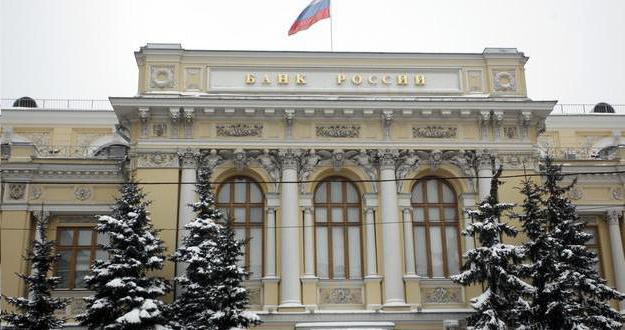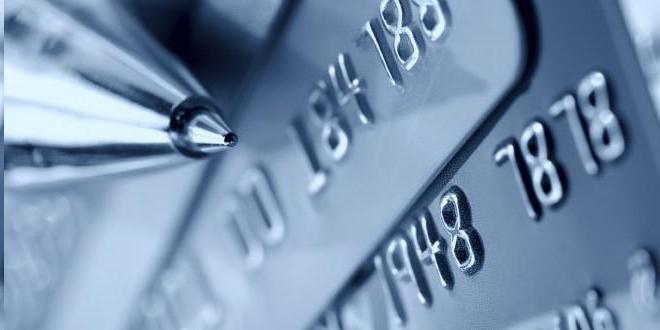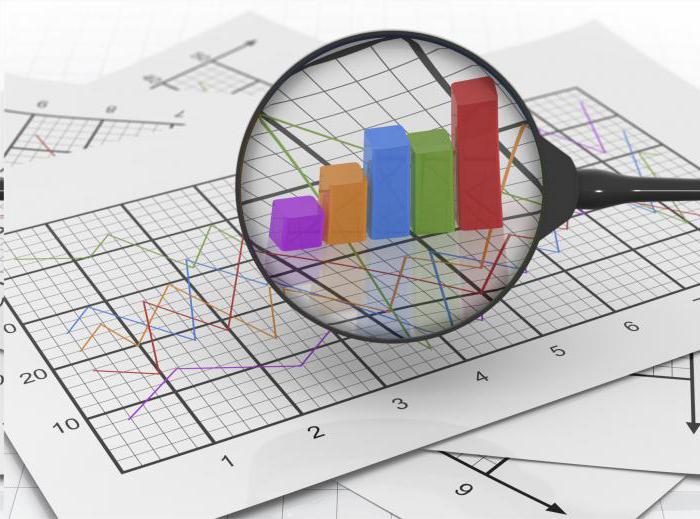Market economy - a mechanism that is sufficiently self-regulatory. But in most modern states there are power institutions that are periodically involved in the management of economic processes due to the fact that this must be done in order to maintain the stability of the national market. These institutions carry out monetary policy. What are the specifics of this type of activity of state structures? What methods do they use?

What is monetary policy?
Under the subject of monetary policy, which is sometimes also called monetary, in the general case, it is customary to understand the state. Thus, this type of activity is the work of authorities, through which the management of the mechanism of cash turnover in the national economy is carried out. The purpose of the monetary policy of the state is to contain prices, ensure employment of citizens and stimulate the growth of the economy as a whole.
The main institution that carries out these activities in the Russian Federation is the Central Bank of Russia. In the narrow sense, monetary policy can be understood as the activity of any economic entity. For example, an enterprise or a municipality whose purpose is to increase the effectiveness of capital management. But more often than not, of course, monetary policy instruments involve state bodies. Consider the main tasks that are solved in this direction of the CBR.
Monetary policy objectives of the bank
So, the main subject that uses various instruments of monetary policy is the Central Bank of Russia. This institution has to solve the following range of tasks:
- inflation regulation;
- unemployment reduction;
- maintaining the national currency;
- ensuring the stability of the state balance of payments;
- ensuring the functioning of the banking system;
- maintaining the work of payment mechanisms in the economy;
- setting adequate interest rates in the field of lending.

Classification of the principles of monetary policy
The central bank may apply several monetary policy strategies. Experts distinguish two main ones - rigid and flexible. What are their specifics?
With the strict method of managing financial flows, those instruments of monetary policy are selected that are aimed at ensuring the turnover in the economy of a specific amount of money supply. A flexible model involves the use of those approaches that involve the regulation of mainly credit mechanisms - most often by increasing or decreasing the interest rate. In the case of the Central Bank of the Russian Federation, the key rate is regulated, which is the determining factor in the conditions for issuing loans from private banks to its customers.

There are other classification criteria for monetary policy. So, the Central Bank can practice a stimulating approach. He suggests that monetary policy instruments will be selected that stimulate the business activity of business entities and, as a consequence, economic growth and the creation of new jobs.
There is, in turn, a restraining approach. He suggests that the monetary policy instruments of the Central Bank will choose those that are aimed at reducing entrepreneurial activity. This approach is primarily used to counter inflation. The main monetary policy instruments of the stimulating type:
- easing reserve requirements for private banks;
- key rate reduction;
- active purchase of securities government bonds.
These measures involve stimulating activities in 3 segments of the economy at once - the banking sector, business in the real sector, as well as in stock markets.
The main deterrent-type monetary policy instruments:
- tightening reserve requirements for private banks;
- increase in key rate;
- sale by the Central Bank of securities issued by the state.
Similarly, the effect of using these tools is observed in several business segments at once.
Monetary Policy Methods
So, we examined the essence of the concept of "monetary policy", instruments of monetary policy. But there are a number of nuances that characterize the activities in question. In particular, it will be useful to consider what methods of monetary policy can be used by the state. There are several ways to classify them. So, an approach is widespread in which direct and indirect methods are distinguished. We study their essence in more detail.

What are the direct methods of monetary policy?
Direct methods of monetary policy of the authorities suggest that the Central Bank will use mainly administrative instruments to regulate monetary policy. This may be the application of limits on the provision of loans or the placement of deposits by private banks. This approach allows the Central Bank to influence primarily the size of the money supply in the economy and, as a result, get the opportunity to regulate inflation. The main advantage of the corresponding methods is the possibility of obtaining an operational result.
As a rule, those instruments of the state’s monetary policy that are used in such scenarios lead to rapid changes in the national economy. However, their impact, as a rule, is not fundamental. Therefore, the achievement of a short-term effect from the application of direct methods of monetary management of the economy most often requires the use of the Central Bank's follow-up measures, fixing the result.
The essence of indirect methods in monetary policy
The specificity of indirect methods is that their application is characterized by the involvement of mainly market mechanisms. For example, the introduction of updated regulations on the activities of private banks, which may affect the policy of determining their priorities in building a business model.
The main advantage of the methods of this type is their fundamental nature, despite the relatively low efficiency of obtaining the results of their application. It can be noted that experts also classify monetary policy methods as general and selective. The former, in principle, are similar to indirect ones, the mechanisms of implementation of the latter are similar to those that characterize the use of direct methods.
So, we examined what monetary policy is, monetary policy instruments, its main methods have also been described. It will now be useful to study a number of practical aspects of their application.
The practice of monetary policy: the participation of the Central Bank in market operations
A sufficiently effective and widespread tool of monetary policy is the participation of the Central Bank in market operations. Consider how it can be implemented.
The activity of the Central Bank in the field of market operations may consist primarily in the purchase or sale of reserve assets using its own reserves. Another common type of activity of the Central Bank in this direction is the management of the state's foreign exchange reserves.This type of activity allows, first of all, to effectively manage the debt policy of the state, and also to influence the investment attractiveness of the country's economy. Another way the Central Bank participates in market operations is participation in foreign exchange trading. Most often, it is carried out in the form of interventions, which are sales or purchase sessions of national or foreign currency in order to adjust the level of its demand or supply.
Monetary policy practice: discount rate management
The next practical monetary policy tool is management discount rate. Its essence is in determining the amount of interest that private banks pay to the Central Bank in exchange for the money they borrow from it in order to use its own capital structure. If the Central Bank lowers the discount rate, then private credit institutions, as a rule, begin to borrow more actively from the Central Bank - as well as offer their customers various financial services.

Of course, the interest on loans for customers is also reduced - and this is an additional incentive growth factor capital turnover in a financial institution. In turn, an increase in the discount rate is usually accompanied by the opposite effect, but at the same time, as we noted above, it helps to counteract inflation.
Special methods of monetary policy
The Central Bank and other financial institutions may also apply special methods of monetary policy. Among these are the stimulation of the export of national products, technologies, capital, and various services. These methods are implemented by intensifying lending to enterprises that are ready to make appropriate deliveries, signing contracts, under which the Central Bank guarantees the provision of various investment programs. Another way to stimulate export is to adjust duties, change the value of various quotas.
The priorities of the state in choosing the priorities of monetary policy depend on many factors - internal, external. Often they are political, that is, they are not directly related to the functioning of supply and demand mechanisms in the market. The competencies of the Central Bank and other financial institutions may not be enough to adequately influence economic processes under conditions of excessive influence on economic factors - therefore, other government institutions may be involved in the regulation of economic processes. Economic issues may become a priority for the government of the country and the highest authorities in general, although in the general case they are within the competence of a sufficiently limited circle of financial institutions.
Monetary policy instruments of the Bank of Russia
Now let's explore what the basic tools are. monetary policy of the Bank Of Russia. In accordance with the provisions of the law, these should include:
- determination of interest rates on own operations,
- establishment of reserve standards,
- which are deposited with the Central Bank of the Russian Federation,
- open market transactions
- refinancing of financial institutions,
- conducting currency interventions,
- management of money growth criteria,
- setting quantitative limits
- issue of securities.
According to experts, the Russian Central Bank focuses on the use of mainly indirect methods of cash flow management in the economy. But the legislation of the Russian Federation allows that the instruments of monetary policy of the Russian Federation will apply those that are classified as direct. In particular, in the form of quantitative restrictions, which may be expressed in the approval of limits for refinancing operations or in the conduct of separate transactions by credit and financial institutions.

In the general case, the Central Bank of the Russian Federation acts as an independent subject of monetary policy. First of all, this is due to the fact that this structure has legal independence from state authorities. However, in a number of cases, its activities should be coordinated with the government of the Russian Federation.
The Bank of Russia quite rarely practices measures of direct impact on the work of private financial institutions — but it may well determine recommendations for them. For example, they may be associated with a decrease in foreign assets in order to suppress capital outflows. Also, the Central Bank of the Russian Federation can determine recommendations for private credit institutions on the value of interest rates in rubles in order to ensure optimal liquidity in banks.
Summary
A market economy is being built in the Russian Federation. Therefore, the monetary policy instruments of Russia are adapted to the mechanisms of free formation of supply and demand in the national economy. Perhaps this explains the involvement of the Central Bank of the Russian Federation mainly of indirect methods of regulating money circulation in the economy. But theoretically, the main credit and financial organization of the Russian Federation can apply the whole range of those monetary policy instruments that we examined above - the legislation does not prohibit this.
The Central Bank, as the main subject of monetary regulation by the national economy, can choose the tools and methods of monetary policy that are best adapted to the current economic situation. If they are direct, then the Central Bank of the Russian Federation has the right to expect a prompt, but sufficiently superficial, result that requires further intervention in economic processes. Indirect methods of intervention of the Central Bank in the economy do not always give quick results, but are characterized by a fundamental impact on the processes that take place in the national economy.

In some cases, assistance to the implementation of monetary policy to the Central Bank may be provided by other government agencies. This may be due to the fact that the competence of the Central Bank may not be enough to solve problems that arise due to the influence of factors not directly related to economic processes. In addition, the Central Bank may have an obligation to consult with other government agencies due to the fact that the methods used by it may affect other areas for the development of which the relevant authorities are responsible.








